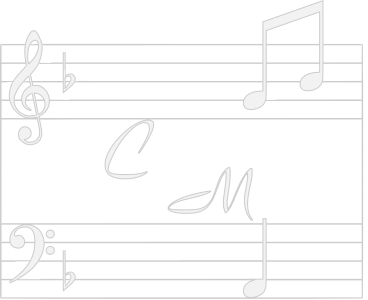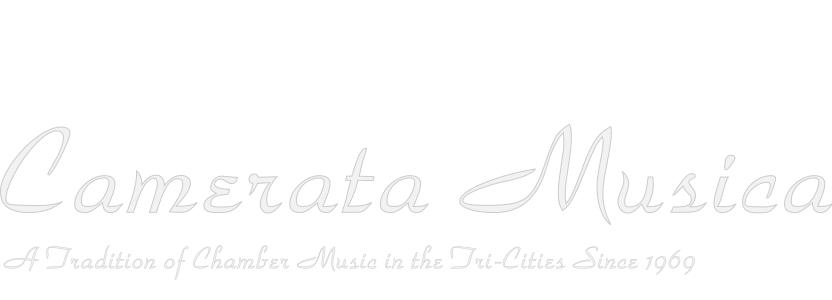Sat., April 21, 2018
April 21st, 2018 8:00 pm at Battelle Auditorium
Joshua Romatowski, flute
Debra Nagy, oboe
Anna Marsh, bassoon
Ingrid Matthews, violin
Nathan Whittaker, cello
Byron Schenkman, harpsichord
Program
| Antonio Vivaldi | Trio-sonata in D, RV 84 |
| Antonio Vivaldi | Oboe Sonata in G Minor, RV 28 |
| Joseph Bodin de Boismortier | Trio-sonata in G Major, op. 37, no. 1 |
| Joseph Bodin de Boismortier | Concerto in E Minor, op. 37, no. 6, |
| Intermission | |
| Anna Bon | Harpsichord Sonata in C, op. 2, no. 4 |
| Giuseppe Brescianello | Trio-sonata in C Minor |
| Johann Ernst Galliard | Bassoon Sonata no. 2 in G |
| Antonio Vivaldi | Concerto in D "Il Gardelino" |
About the Musicians
BYRON SCHENKMAN has recorded more than thirty CDs of 17th- and 18th-century repertoire, including recordings on historical instruments from the National Music Museum, Vermillion, and the Museum of Fine Arts, Boston. A recipient of the Erwin Bodky Award from the Cambridge Society for Early Music “for outstanding achievement in the field of early music,” he was voted “Best Classical Instrumentalist” by the readers of Seattle Weekly in 2006, and his piano playing has been described in The New York Times as “sparkling,” “elegant,” and “insightful.” He has been a featured guest with the Chameleon Arts Ensemble of Boston, the Daedalus Quartet, the Northwest Sinfonietta, Pacific Baroque Orchestra, Philharmonia Northwest, and the Portland Baroque Orchestra. He was also founding co-director of the Seattle Baroque Orchestra with violinist Ingrid Matthews. In 2013 he launched “Byron Schenkman & Friends,” a Baroque and Classical chamber music series at Benaroya Hall in Seattle. Recently he has been studying Klezmer music with Shawn Weaver and has begun collaborating on performances of Russian Jewish art music with violinist Steven Greenman. Schenkman is a graduate of the New England Conservatory and received his master’s degree with honors in performance from the Indiana University School of Music. He currently teaches at Seattle University and Cornish College of the Arts. In 2012 he also served as guest lecturer in harpsichord and fortepiano at the Indiana University Jacobs School of Music.
Notes on the Program
By Byron Schenkman
Before Antonio Vivaldi, most chamber music featured pairs or groups of like instruments such as trio sonatas for two violins and continuo or string concertos or (earlier) consorts for recorders or viols. In the early 18th century Vivaldi popularized sonatas and concertos for diverse combinations of instruments including many chamber concertos for flute, oboe, violin, bassoon, and continuo. Besides being a celebrated violinist and a prolific opera composer, Vivaldi presided over the Ospedale della Pieta, a famous Venetian music school and home for girls. Some of the young musicians in residence there were orphans; others came from wealthy families willing to pay for their daughters to have such a great musical education. The virtuosity of the music Vivaldi composed for these students indicates that there must have been many phenomenally talented young women and girls at the Ospedale.
Joseph Bodin de Boismortier was one of the first composers to earn a living by selling music to the general public, neither relying on a church, court, or theater for employment, nor on aristocratic patronage. Therefore he had to be up on the latest fashions and to present works with broad popular appeal. His opus 37 contains five trio sonatas which he indicates may be performed by flute and viol, oboe and bassoon, or violin and cello (always with continuo accompaniment), retaining the traditional preference for pairing like instruments when possible. These five trios are then followed by a chamber concerto with the mixed instrumentation most typical of Vivaldi.
Anna Bon was one of the paying students at the Ospedale della Pieta beginning at the age of four. While still a teenager she was hired as a professional singer at the Brandenburg court in Bayreuth. She published three volumes of instrumental music by the time she was nineteen before marrying and drifting into obscurity.
The violinist Giuseppe Antonio Brescianello was another of the many Italian musicians employed at German courts during the Baroque era. European music was becoming increasingly international in flavor and his C Minor trio sonata incorporates French dotted rhythms in the first movement, Italian virtuosity in the second, and German empfindsamkeit (a kind of expressive sensitivity) in the third. Meanwhile Johann Ernst Galliard was a German musician who settled in England where he became the principal oboist in George Friderick Handel’s opera orchestra.

